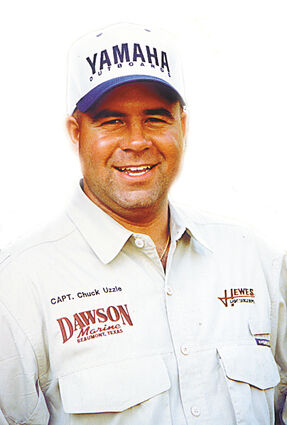Crossing the line
Last updated 2/8/2022 at 4:47pm
For as long as I can remember the first few weeks of every New Year have been an
exciting transitional period for a myriad of reasons. The most obvious is the hope and high expectations that come from turning the calendar page and staring a brand new season in the face and liking what you see. For those of us enamored with the outdoors January and February are a fantastic buffet with endless options from one end of the spectrum to the other. Many of us have just put away our hunting gear and begun to long for days on the water while staring out the window at the most unpredictable weather associated with this time of year. February for me was always associated with trips to Toledo Bend searching for big bass or crappie until I was shown what I had been missing for so long at home during the winter months on Sabine Lake.
Chasing fish in the winter and early spring here on Sabine usually meant probing shorelines along the river with a trusty Rat-l-trap and catching my fair share of redfish. That crankbait pattern that worked so well on redfish was perfected by bass fishermen who made a living farming the grass flats and points of the freshwater lakes to our north. Although this pattern was very successful it was only part of the overall puzzle and I had yet to find the other missing pieces that would introduce me to big winter speckled trout.
After many fruitless trips and empty casts I finally was rewarded with one of those unforgettable days on the water that we all dream about, big hungry trout stacked up across a flat and no other boats in sight all day. The trip was epic with the regards to the fish we caught but that paled in comparison to the things I learned on that day. Previously I had multiple conversations with some of the best big trout anglers I knew of at several of the boat shows and if they would let me I would pick their brain about all things associated with big trout in the winter or big trout in general. Each angler I spoke with was more than happy to share a few tips and I cherished each of them. The common denominator in virtually all these conversations was using a somewhat bigger bait that mimicked a mullet. The overwhelming choice of lures for nearly all the anglers I talked with was a Paul Brown Corky, the mysterious "super bait" that had produced more than its fair share of double digit trout over the years.
In the right hands a Corky is about as good as it gets when it comes to catching these big fish in the winter months, but it's an acquired talent that many have trouble mastering. I have seen my clients on more than one occasion just absolutely give up on the plug because they just couldn't get a feel for the bait while others took right to it. It was at that moment that I decided I had to come up with a more "user friendly" technique for those who had trouble mastering the Corky and I reverted back to my freshwater upbringing for help. The Corky really shines when those big trout suspend or get lethargic due to temperature and that's usually what anglers are faced with in the winter and early spring. A freshwater alternative to the Corky that is a little more user friendly would be one of the stick baits like the old Smithwick Rogue or classic Rapala plugs. These plugs are designed to be retrieved slowly down to a certain depth so they take most of the guesswork out for the angler. I have had great success using these plugs over the years and I still go to them on many occasions. It's just awesome to see folks who were previously frustrated by not catching fish get fired up once they get that first bite and figure out the technique. As a guide you can do no better than teaching your clients a technique or tactic that they can use later on down the road, that's one of the best rewards possible.







Reader Comments(0)